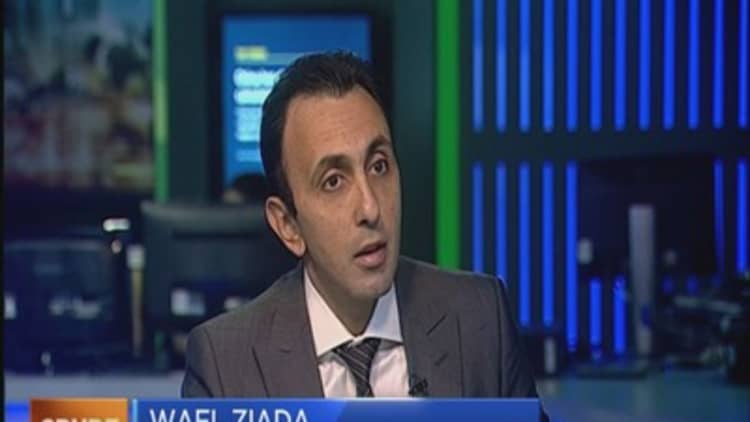The Middle East's largest economy faces dwindling economic growth and a sharp drop in government revenues, hit by a toxic mix of tumbling oil prices, regional conflicts and the strength of the U.S. dollar, regional experts warned.
On Wednesday, the International Monetary Fund (IMF) warned that the large decline in oil prices and sharp drop in energy revenues would see the economy slow both this year and next in Saudi Arabia.
It forecast that real gross domestic product (GDP) would grow by 2.8 percent in 2015 and 2.4 percent in 2016, down from 3.5 percent last year. Oil revenue was seen contributing 24.2 percent to GDP this year, down from 32.6 percent in 2014.
"Risks to the growth outlook are tilted to the downside," the IMF said in Wednesday's report, which followed a visit by its economists to Riyadh in May.
"The main downside risks are the possibility of lower oil prices due either to weaker global demand or increased supply, the possibility that domestic reforms do not generate a growth dividend and create a more diversified and self-sustaining private sector that creates jobs and reduces inequality and an escalation of regional tensions that undermines confidence and investment," it continued.
There's a "perfect storm of global and local concerns" surrounding the country, Hasnain Malik, head of frontier markets strategy at Exotix Partners, said in a research note this month.
"We expect most of these local concerns to correctly persist as long as oil prices remain low, given the dependence of most of the Saudi economy, directly and indirectly, on oil revenues," he later added.
Saudi Arabia is the dominant member of the Organization of the Petroleum Exporting Countries (OPEC) and oil and gas accounts for around half of its GDP and 85 percent of its export earnings.
This has made it highly vulnerable to the slump in the price of oil over the last 12 months, which has seen prices decline by around 50 percent to below $50 per barrel.
Energy Futures
The Saudi economy is also burden by a fiscal deficit that the IMF sees reaching 19.5 percent of GDP this year, driven by declining oil revenues and a forecast 5 percent upturn in government spending—although the cost of military operations in Yemen is uncertain.
With that in mind, EFG Hermes has an "underperform" rating on Saudi Arabia, which it says will remain a drag on the region as it grapples with low oil prices.
"I think some of the MENA countries (Middle East and North Africa) that are going to do better with low prices are the ones whose current account deficit has generally been generated by the oil or the energy subsidies," Wael Ziada, head of research at EFG Hermes, told CNBC on Wednesday.

Malik said that the only lasting solutions for Saudi's vulnerability to low oil prices was for the government to accelerate reforms, including spending cuts, private sector generation and liberalizing labor and housing markets.
"The question is whether the recent collision of concerns acts as a stimulus to accelerate these reforms or drives a reactionary turn, falling back on the old, but increasingly unsustainable, response to uncertainty: Fiscal stimulus," he said.
—By CNBC's Katy Barnato. Follow her on Twitter @KatyBarnato.





